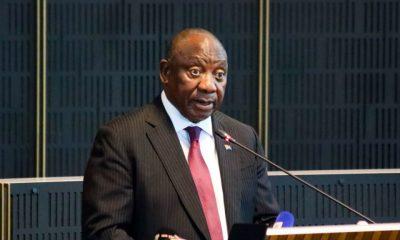Business
Skilling South Africa’s Youth: The Key to Unlocking Industrial Growth

South Africa is standing on a fault line. With a staggering 59.6% youth unemployment rate among 15–24-year-olds, the country faces more than just an economic downturn—it faces a social emergency. Townships and rural communities overflow with untapped potential while key industries like energy, construction, and engineering cry out for skilled hands.
Despite existing frameworks—the National Youth Development Agency (NYDA) Act, the National Youth Policy (2020–2030), and the Integrated Youth Development Strategy—the crisis persists. Why? Because policies aren’t landing where they matter most: on the ground, in communities, and inside workshops that shape our infrastructure.
When Policy Meets Reality
Research from the Human Sciences Research Council (HSRC) and Development Policy Research Unit (DPRU) reveals a fragmented policy landscape. Implementation is slow. Accountability is scarce. Even worse, our education system continues to fail at the foundation—where too many Grade 4 learners cannot read for meaning, according to the South African Institute of International Affairs (SAIIA).
This disconnect becomes glaring in sectors that require high-precision skills. As someone immersed in energy infrastructure projects, I’ve seen firsthand how a lack of skilled artisans delays progress and inflates costs.
The Fallout Is More Than Economic
Youth unemployment breeds crime, unrest, and intergenerational poverty. It gnaws away at national cohesion and potential. While President Cyril Ramaphosa’s 2025 SONA and Finance Minister Enoch Godongwana’s budget speech referenced economic growth and infrastructure, they offered few actionable plans on tackling youth joblessness.
In fact, with R380 billion allocated to debt repayments, many skilling programs are left gasping for financial oxygen.
Bridging the Skills Gap
We don’t lack talent—we lack connection. The HSRC and DPRU both highlight a skills mismatch between what institutions teach and what industries need. Real change begins by aligning education with practical application.
In my own mentorship experience, training in boiler systems and specialised welding techniques has proven transformational—not just for individuals, but for the projects they power. The global shortage of over 400,000 welders (AWS, 2024) is a gap South Africa can help fill—if we act.
Learning from Global Leaders
Brazil and India offer compelling case studies. Brazil reduced youth unemployment to 17.9% by 2023 by implementing structured apprenticeship programs. India’s Skill India initiative, rooted in public–private partnerships, has already created millions of jobs in the tech and manufacturing sectors.
Imagine adapting these models for South Africa’s renewable energy and engineering fields—we’re talking real jobs, real skills, and real futures.
A National Pact for Youth Empowerment
South Africa’s future depends on cross-sector collaboration. Here’s what it will take:
-
Reform existing youth policies with clear targets, funding, and transparency.
-
Invest in skills that matter—such as welding, engineering, and digital trades.
-
Build strong public–private partnerships to scale programs like the Harambee Youth Employment Accelerator.
-
Let the youth lead—embed their voices into the design and execution of every program.
South Africa is bursting with potential. Our youth are not a burden—they are the bridge to a transformed industrial landscape. But time is running out.
It’s time to move beyond empty promises. Let’s build an inclusive, tech-savvy workforce ready to electrify our economy and export excellence to the world.
The choice is ours: continue down the path of policy paralysis or forge a bold, united push for a future powered by skilled youth.
{Source IOL}
Follow Joburg ETC on Facebook, Twitter , TikTok and Instagram
For more News in Johannesburg, visit joburgetc.com



























